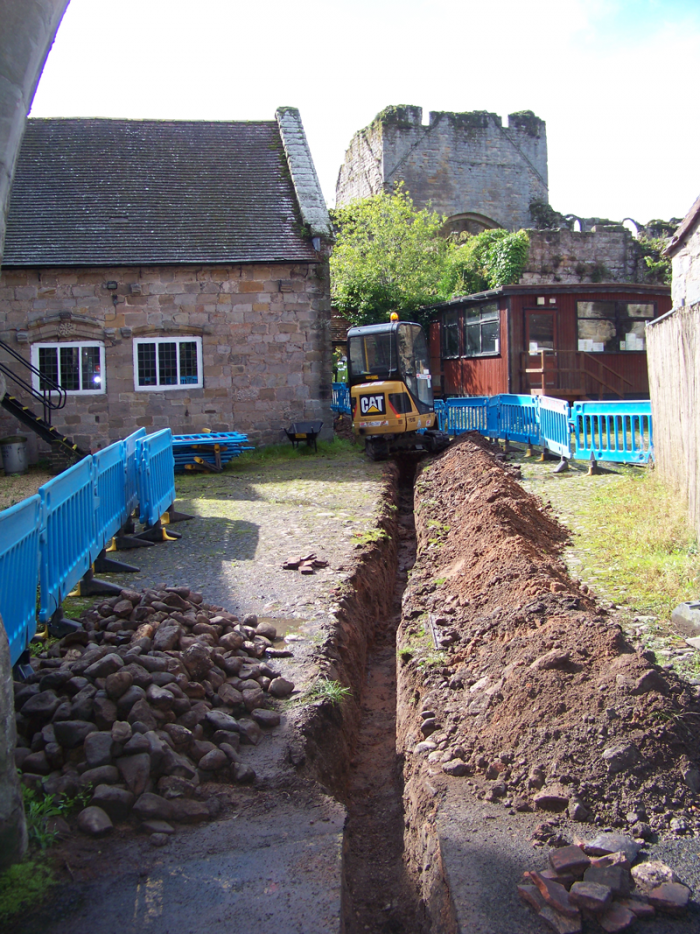An archaeological watching brief was carried out during the machine-excavation of a 90m long cable trench at the Sports and Social Club, Abbey House, Buildwas Abbey, Shropshire. The trench traversed the site of Buildwas Abbey (Scheduled Ancient Monument No. 1015813). Scheduled monument consent for the cable trench was granted by Historic England.
The watching brief revealed significant archaeology, which notably included two substantial stone walls of medieval or early post-medieval date. A possible floor surface and a degraded mortar deposit extended between the walls, suggesting the location of a building.
The abbey was founded by Roger de Clinton, Bishop of Chester, in 1135, although no building work is known to have taken place during the time of the first abbot, Ingenulf. The walls identified during the Watching Brief are not likely to predate the primary phase of building construction initiated by Abbot Ranulf, who ruled the house from 1155 until 1187. Many of the Abbey buildings, including the church, cloisters and chapter-house, were probably constructed at this time. Some abbey buildings were still being constructed later in the thirteenth century; in particular the South Chapel of the Church, the Infirmary Court and the Abbot’s Lodging.
To the north of the abbey infirmary wall, the Watching Brief revealed a truncated ceramic tiled surface that appeared to represent an intact medieval floor. The tiles may have originally extended up to a substantial structure built in sandstone block, interpreted as a medieval wall or pier base. It is possible that the stone foundations and the tile floor were associated with the abbey infirmary.
In addition to the features noted above, two layers of disturbed post-medieval demolition rubble were encountered northwest of Abbey House, adjacent to the infirmary archway. The finds retrieved from the demolition deposits included a lead-glazed 13th or 14th century ceramic ridge tile, a glazed and patterned medieval floor tile in a Malvern fabric and post-medieval pottery.


